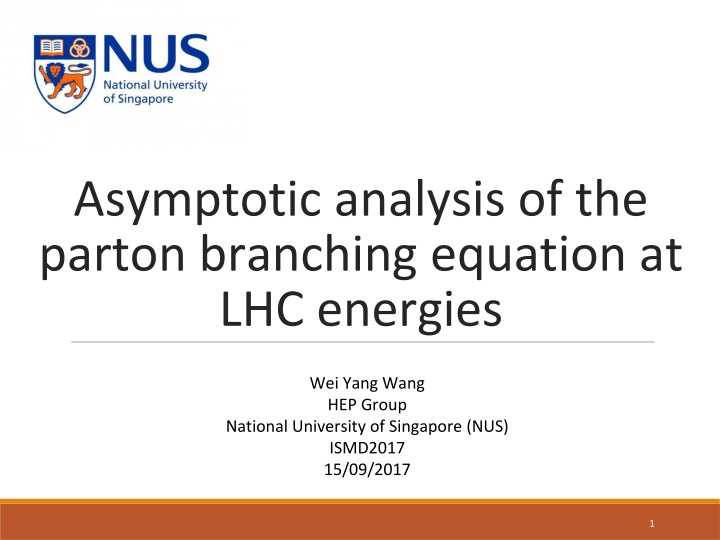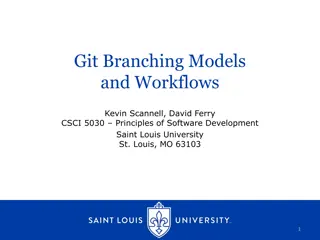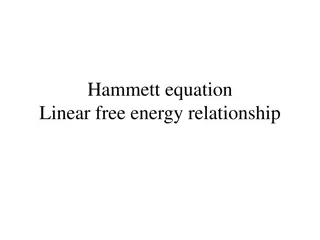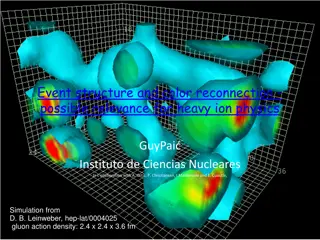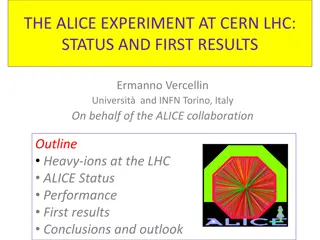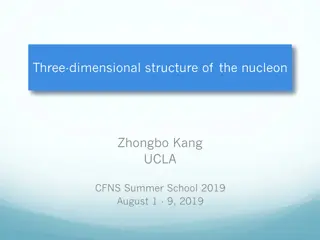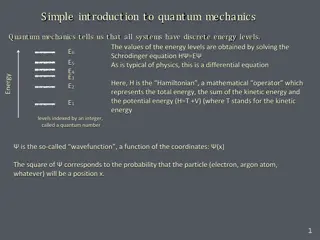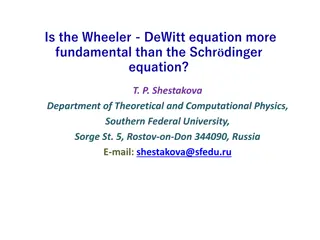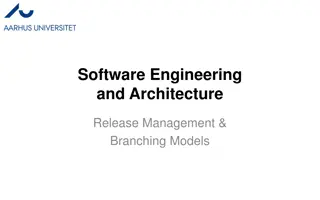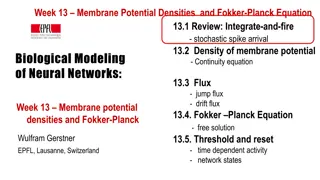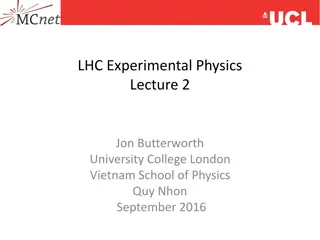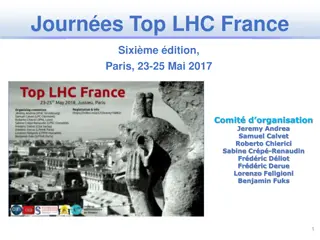Insights into Parton Branching Equation at LHC Energies
Multiplicity distributions play a crucial role in understanding the cascade of quarks and gluons at the LHC energies, revealing underlying correlations in particle production. Popular models like Monte Carlo and statistical models are used to describe the charged particle multiplicity distributions. QCD-based parton branching models, such as the Generalised Multiplicities Distribution and Asymptotic Multiplicity Distribution, provide valuable insights into the branching processes of quarks and gluons forming charged hadrons.
Download Presentation

Please find below an Image/Link to download the presentation.
The content on the website is provided AS IS for your information and personal use only. It may not be sold, licensed, or shared on other websites without obtaining consent from the author.If you encounter any issues during the download, it is possible that the publisher has removed the file from their server.
You are allowed to download the files provided on this website for personal or commercial use, subject to the condition that they are used lawfully. All files are the property of their respective owners.
The content on the website is provided AS IS for your information and personal use only. It may not be sold, licensed, or shared on other websites without obtaining consent from the author.
E N D
Presentation Transcript
Asymptotic analysis of the parton branching equation at LHC energies Wei Yang Wang HEP Group National University of Singapore (NUS) ISMD2017 15/09/2017 1
Multiplicity Distributions Parton branching equation describes the cascade of quarks and gluons through basic branching processes, eventually forming charged hadrons Basic global observable (P(n) probability of observing n charged hadrons in an event) Charged particle multiplicity distributions at the LHC: ALICE, ATLAS, CMS wide |?| at various c.m. energies [CMS Collaboration, JHEP01 (2011) 079] 2
Multiplicity Distributions Reveals underlying correlations in particle production Independent emission of single particles Poisson Thermal source broader distribution e.g. Negative Binomial Distribution (NBD) Correlations mainly short range in rapidity (cluster decays ) Some long range correlations that increases with c.m. energy (much weaker in e+e-collisions) [CMS Collaboration, JHEP01 (2011) 079] 3
Multiplicity Distributions Popular models: Monte Carlo (QCD + QCD inspired phenomenological models e.g. MPI) Large multiplicity tails difficult to describe (especially without MPI) [CMS Collaboration, JHEP01 (2011) 079] 4
Multiplicity Distributions Popular models: Statistical models (e.g. NBD, double NBD) Single NBD does not reproduce the rise n<10 and shoulder n 20 Low n dominated by diffractive events IP Glasma model (CGC) NBD (k QsS ) Double NBD fits better but meaning not clear [ALICE Collaboration, arXiv:1708.01435, 2017] 5
QCD-based parton branching models Parton Branching Models (Giovannini, 1979) Describes the cascade of quarks and gluons eventually forming charged hadrons NBD arises from the Markov branching process of quark bremsstrahlung Generalised Multiplicities Distribution (GMD) Asymptotic Multiplicity Distribution (AMD) 6
QCD branching processes Giovannini, 1979 Closed form solution difficult to obtain. Assume quark pair production negligible (B = 0) 7
Generalised Multiplicity Distribution (GMD) /A (k=m /A) [chan, chew, Z. Phys. C 55 (1992) 503] [Wang, Leong, Ng, Dewanto, Chan, Oh, Proceedings of the Conference in Honour of the 90thBirthday of Freeman Dyson (2014), 400] 8
QCD branching processes Giovannini, 1979 Expect to be more important at high energies like at LHC Difficult to get closed form solution. Asymptotic solution possible. 9
Asymptotic Multiplicity Distribution Solution obtained by performing a Laplace transform (n x) Defining Taylor expansion of L(x+ x) about x 10
Asymptotic Multiplicity Distribution Inverse Laplace transformation + saddle point approximation 11
Asymptotic Multiplicity Distribution Solution Stirling approximation + replacing with original physical parameters 12
Asymptotic Multiplicity Distribution Reduces to GMD when B=C=0 (i.e. negligible quark pair production and 4-gluon vertex) Further reduces to NBD when k =0 (i.e. no initial gluons) 13
LHC data CMS charged particle multiplicity distribution 0.9 TeV 2.36 TeV 7 TeV 14
LHC data ALICE (8 TeV) ATLAS (13 TeV) 15
Summary An asymptotic solution (AMD) to the parton branching equation including 4 branching processes can be derived using the Laplace transformation and saddle point approximation AMD is reducible to the GMD and NBD in the limits of parameter values Applied to 0.9, 2.36, 7, 8, 13 TeV data from ALICE, ATLAS, CMS 16
Thank you for your attention! 17
